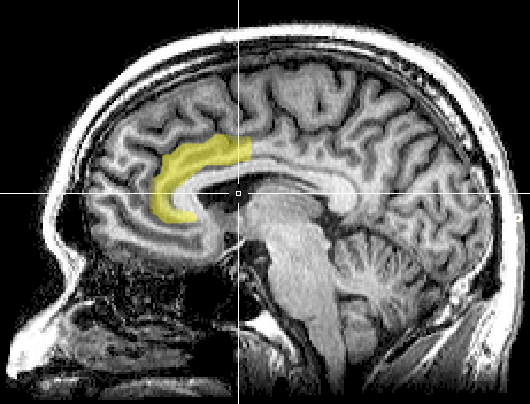

Transcranial magnetic stimulation can create variations in high-intensity magnetic fields to generate electrical currents in the cerebral cortex (image: Geoff B Hall/Wikipedia)
Three promising brain stimulation methods used in medical practice and academic research.
Three promising brain stimulation methods used in medical practice and academic research.

Transcranial magnetic stimulation can create variations in high-intensity magnetic fields to generate electrical currents in the cerebral cortex (image: Geoff B Hall/Wikipedia)
Agência FAPESP – The director of the Research, Innovation and Dissemination Center for Neuromathematics (NeuroMat), Oswaldo Baffa, together with four other researchers from the Center, has published an article in the Brazilian Journal of Medical Physics in which he examines three promising techniques used in medical practice and academic research to stimulate the brain. They are transcranial magnetic stimulation (TMS), transcranial electrical stimulation (tES) and low-intensity focused ultrasound (LIFU).
NeuroMat is a Research, Innovation and Dissemination Center (RIDC), supported by FAPESP, based at the University of São Paulo (USP).
Transcranial magnetic stimulation is able to create variations in high-intensity magnetic fields and thereby produce electrical currents in the cerebral cortex. Depending on where the stimulus is applied, it reaches different regions that control the brain.
According to the researchers, the use of TMS helps to understand which structures of the brain are associated with certain regions of the body, which includes the entire structure of the nervous system, from the cortex to the central and peripheral neural pathways to the muscles. Magnetic stimulation can be used to treat specific regions of the brain associated with conditions such as depression, bipolar disorder, obsessive-compulsive disorder and schizophrenia.
Using two electrodes of opposite polarity placed on the heads of the volunteers, as shown in the study, transcranial electrical stimulation is also capable of generating a low-intensity electrical current in the brain that stimulates or inhibits the activity of neurons at the site of application. There are three different types of tES, depending on the intensity of the electrical current applied.
The researchers add that tES is cheaper and more portable than TMS, but it is not able to focus the currents precisely on the target regions. Transcranial electrical stimulation is already being used to help people recover from strokes and depression. It has also been shown to improve learning, memory and attention.
Ultrasonic waves have been used in medicine for several decades to study the human body. More recently, low-intensity focused ultrasound has been used to study the brain. The hypothesis is that ultrasonic waves alter the membrane of neurons and the blood-brain barrier, which controls the substances that pass from the blood to the nervous system, thus allowing neural modulation.
According to the authors of the article, the major advantages of the technique are its ability to reach deeper areas of the brain than TMS and tES, and its ability to precisely target the stimulus. However, the application of the technique and its benefits still need to be better understood, as LIFU is a newly developed method.
The combination of techniques that can externally stimulate the brain with methods that measure brain activity, the researchers say, offers promising prospects for future advances in the understanding and treatment of neurological and psychiatric disorders.
The full article is available in English on the website of the Brazilian Journal of Medical Physics.
Republish
The Agency FAPESP licenses news via Creative Commons (CC-BY-NC-ND) so that they can be republished free of charge and in a simple way by other digital or printed vehicles. Agência FAPESP must be credited as the source of the content being republished and the name of the reporter (if any) must be attributed. Using the HMTL button below allows compliance with these rules, detailed in Digital Republishing Policy FAPESP.





